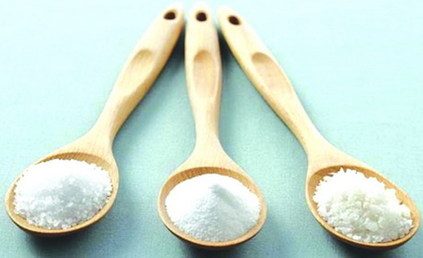
Aussie kids are eating alarming levels of salt
Australian kids are eating alarming amounts of salt, putting them at greater risk of heart disease later in life, and making simple changes to what goes in kids’ lunchboxes can reduce salt by as much as 4g a day.
Research shows that an average Australian child consumes more salt than the recommended amount for adults, increasing the likelihood they will experience raised blood pressure in later life. Recently released Australian Health Survey data showed that 4-8 year old children had an average salt intake of 5.1g per day and 9-13 year olds 6.2g per day in contrast with the National Health and Medical Research Council’s recommended upper limits of 3.5g and 5 grams for these age groups.
A new report published today by The George Institute for Global Health shows that by switching to healthier choices of the same food type, children can lower dietary salt intake from their school lunchbox meal and dramatically reduce some of this excess.
Dr Jacqui Webster of The George Institute and The University of Sydney said that this increased salt consumption in children is disturbing, especially when there are very simple ways to keep excess salt out of kids’ diets.
“We’ve shown that children can avoid consuming almost 4g of salt if parents make the right choices for their lunchboxes,” said Dr Webster.
“This year’s Salt Awareness Week is an important reminder for parents to empower themselves with the tools and information they need to make sure their kids are getting healthier, lower-salt options every day,” she said.
“We have seen some fantastic results when parents use the FoodSwitch app and Health Star Rating labels, which makes it easy while shopping to switch to healthier options when choosing packaged foods,” said Dr Webster.
Poor diet, which includes excessive salt consumption, is the leading cause of ill health in Australia and a major contributor to other leading and associated causes of death and disability like heart attack, stroke, high blood pressure, kidney disease and diabetes.
Many companies are already working to reduce salt in food products through the government’s Food and Health Dialogue. However, The George Institute is advocating for Australia to work harder to address this public health priority through a five-pronged approach consisting of: strong government leadership, broader engagement with the food industry to reduce salt in foods and meals, effective implementation of the Healthy Star Rating labelling system; wide-reaching community education campaigns; and a robust food supply monitoring program.
To find out more about the Food and Health Dialogue, click here: http://www.foodhealthdialogue.gov.au/internet/foodandhealth/publishing.nsf
Healthy lunchbox tips
- Where possible, choose fresh, whole foods, for kids to take in their lunchboxes. Choose healthier, lower salt options of the same food type, including sandwich bases, fillings and snacks.
- Use the FoodSwitch app and Health Star Ratings when shopping to find healthier options among packaged foods.
- Include a drink in the lunch box to ensure kids get enough fluids. The best choice is water. Other better choices include a small milk drink or 99% fruit juice of less than 200ml. A chilled bottle of water in the lunchbox can also help keep foods cool.
- Offer a variety of healthy lunch box choices as children learn to eat what is familiar to them. For example offer different seasonal fruits for a change in flavour and texture.






